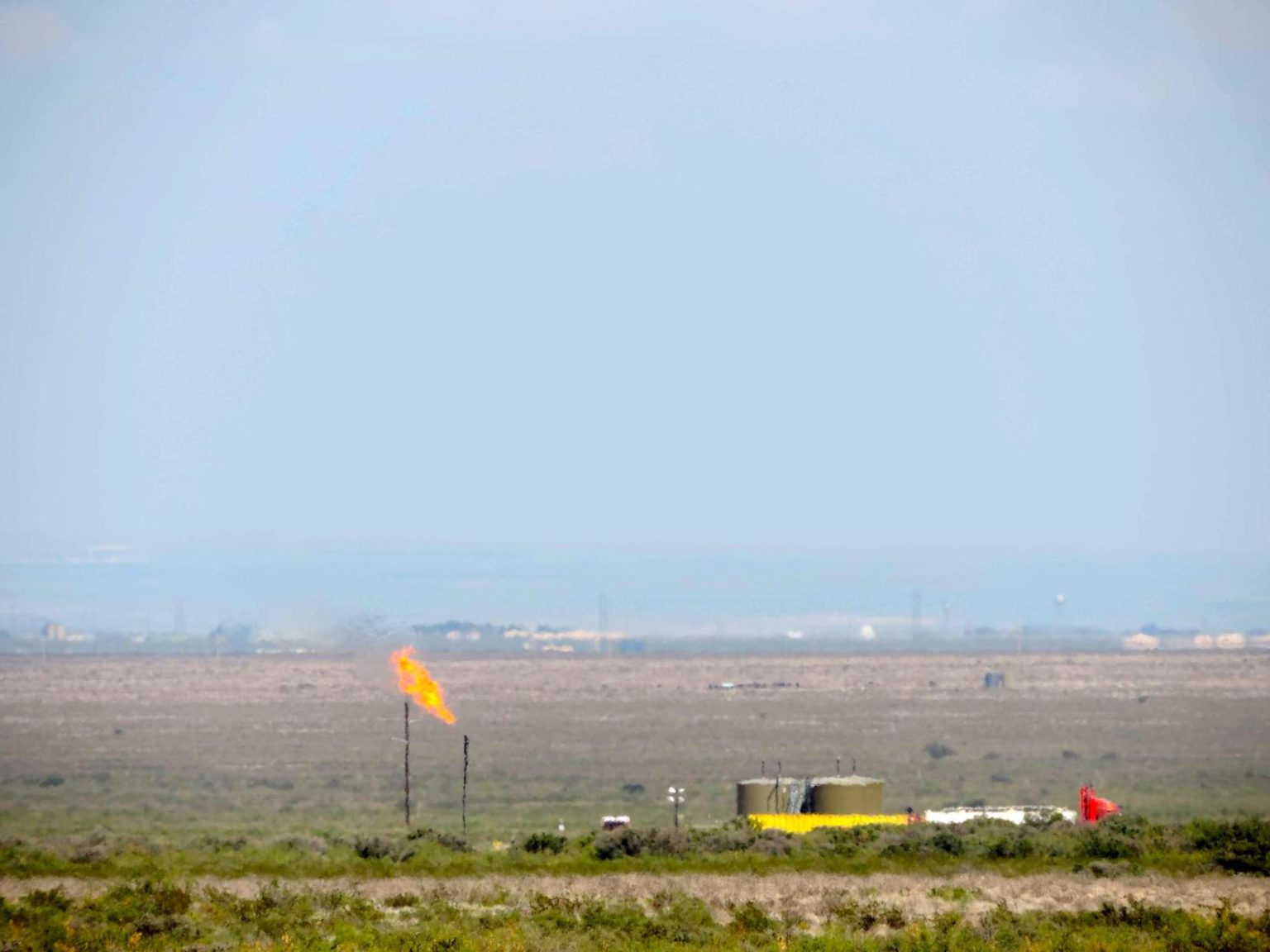An environmental group based in New Mexico is suing the U.S. Bureau of Land Management (BLM) over alleged violations of the National Environmental Policy Act (NEPA) related to climate change. It’s the second lawsuit the agency has faced over its approval of oil and gas leases on public lands in recent years.
WildEarth Guardians has filed a lawsuit against BLM and the Department of Interior, asking a federal court in New Mexico to vacate 210 oil and gas leases approved between 2017 and 2018. The leases cover over 70,000 acres of public land in the southeastern portion of the state, just a few miles away from Carlsbad Caverns National Park and within the Permian Shale, a hotbed for fracking.
WildEarth Guardians charges BLM with conducting “inadequate” environmental assessments of the leases that “failed to take a hard look at the direct, indirect, and cumulative impacts of oil and gas leasing and development on the lease parcels.” It also alleges that BLM did not provide sufficient public participation opportunities in the process, in violation of NEPA rules.
“When you approve oil and gas development on public lands, it is reasonable to presume there will be greenhouse emissions released and the science says that those kind of emission[s] have climate implications,” Jeremy Nichols, climate and energy program director at WildEarth Guardians, told DeSmog. “It’s not about a single oil and gas lease, it’s about all the leasing that’s going on.”
A BLM spokesperson said the agency “cannot comment on pending litigation.”
A Track Record of Ignoring Climate Impacts
Environmental groups argue that the agency has a history of ignoring climate impacts in environmental assessments as part of its resource management program on public lands. Interior Secretary David Bernhardt nearly admitted as much in a recent interview with The Colorado Independent, in which he indicated he isn’t worried about climate change impacts on Rocky Mountain National Park, and said he’s proud to be “expeditiously” processing drilling applications on public lands.
Bernhardt, who took over the agency in April, helped expedite the first oil and gas leases in Alaska’s Arctic National Wildlife Refuge, a move which has come under fire from environmental groups and academics. Columbia University’s Sabin Center for Climate Change Law, for example, characterized the related environmental impact statement as “insufficient.”
The courts are beginning to agree. WildEarth Guardian’s New Mexico lawsuit, which was filed in early June, follows a similar case it brought against BLM in 2016 over oil and gas leases approved across public lands in Wyoming, Colorado, and Utah.
In March, a federal judge found BLM had failed to properly include cumulative, indirect climate impacts in its environmental analyses, and ordered the agency to re-do assessments for several lease approvals covering a total of 450,000 acres of public land
BLM Needs to Take Broader View on Climate
Claret cup blooming in spring. Carlsbad Caverns National Park. Credit: National Park Service / Emily Ficker, public domain
The decision in the Wyoming case marks an important turning point for environmental groups, according to Nichols. BLM typically considers greenhouse gas emissions and other climate impacts as they pertain to a specific lease. That enables the BLM to approve dozens of drilling leases across a region without considering the effects of those leases on one another.
“The Wyoming ruling really underscores that there’s a need for the Bureau of Land Management to take a program-wide view of the climate impacts of on-shore oil and gas development,” Nichols said. “Those emissions have to be assessed in the context of broader greenhouse gas emissions with public land oil and gas development. [The judge] even said that BLM needs to address emissions on a regional and national scale. That was significant.”
Robert Glicksman, professor of environmental law at George Washington University, agreed that the ruling was a bit of a surprise. “The courts have often been somewhat reluctant to review what they characterize as programmatic challenges. That is, challenges to a series of actions which the plaintiffs try to designate as an agency program,” Glicksman said, rather than a series of individual decisions.
“If the New Mexico court weighs in the same way as the Wyoming court did, that kind of bolsters the strength of this precedent and begins to impress upon the BLM the notion that they better cross their T’s and dot their I’s and if they don’t, the court is likely to send them back to the drawing board,” he added.
“Climate pollution from #oilandgas production in the Greater Carlsbad region is just as bad as #coal-fired power plants, yet the Bureau of Land Management continues to give industry a free pass to pollute.” –@RebeccaJFischerhttps://t.co/mYpRZExxzz
— WildEarth Guardians (@wildearthguard) June 3, 2019
Courts as a Battleground Against Trump Rollbacks
President Trump has unabashedly made rolling back environmental and climate regulations a key tenet of his administration. “Every single significant Obama agency climate decision has either been revoked already or is in the process of being revoked,” Glicksman said.
But over the past two years, the courts have emerged as a critical battleground for efforts to halt regulatory changes that prioritize fossil fuel industry interests over the public’s. In fact, to date, no regulatory rollbacks related to climate change brought before the courts have won, according to a recent working paper released from the Sabin Center.
“It’s encouraging that the courts are taking the law seriously. But I think it’s too early to tell what the fate of the Trump rollback is,” Glicksman said.
“We haven’t yet seen a judicial decision on some of the really major issues,” such as the Trump Environmental Protection Agency’s Clean Power Plan replacement, or the anticipated rollback of the EPA fuel economy standards, he added. “Until we see some of those decisions, I don’t think we can make an assessment.”
Main image: Flaring of natural gas near Carlsbad Caverns National Park in New Mexico. Credit: WildEarth Guardians, CC BY–NC–ND 2.0
Subscribe to our newsletter
Stay up to date with DeSmog news and alerts







